Tree supports work best for your tiny models because they use minimal material while targeting specific areas that need support. You’ll want to set your support density between 10-15% and configure the interface distance to 0.0 mm for easier removal. Consider using breakaway materials like BVOH or PETG for cleaner detachment without damaging delicate features. Manual placement gives you precise control over critical areas, and tilting your model 30-45 degrees reduces overhangs while improving success rates for intricate designs.
Tree Supports Vs Grid Supports for Miniature Models
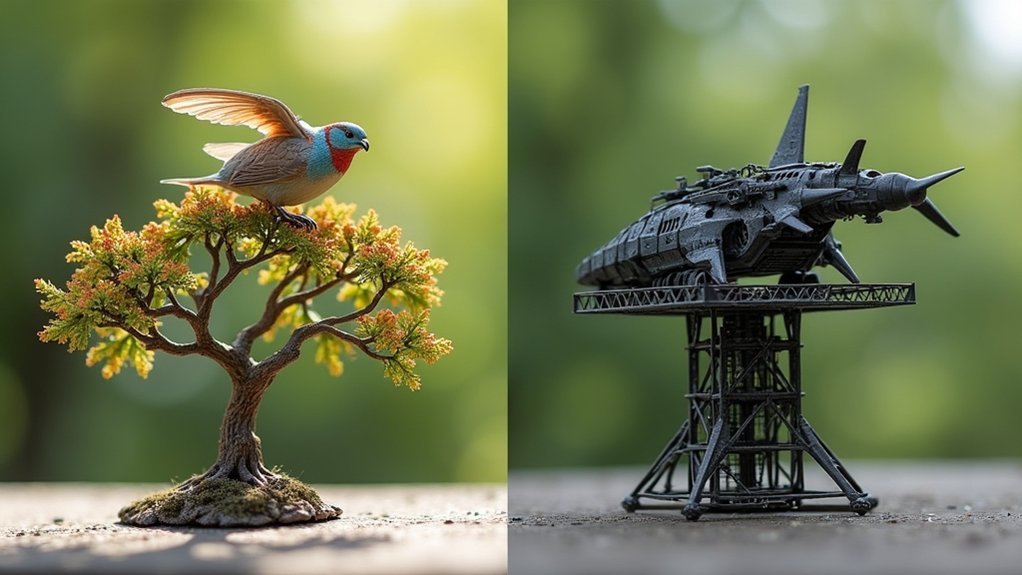
Two primary support types dominate miniature 3D printing: tree supports and grid supports.
When you’re printing tiny models, tree supports consistently outperform grid supports due to their targeted approach and minimal material usage. You’ll find that tree supports connect with your model at the nozzle diameter, making removal easier without damaging delicate features.
Grid supports often leave unwanted marks and don’t conform well to complex geometries.
Tree supports excel with intricate designs featuring protruding elements like swords or weapons. They reduce overall support weight, improving print quality and reducing failure risks.
You’ll get better stability for complex models while using less material. For tiny models with detailed features, tree supports provide superior results compared to traditional grid supports that can overwhelm delicate miniatures.
Breakaway Support Materials and Their Benefits
You’ll find breakaway support materials like BVOH and PETG transform your tiny model printing experience by detaching cleanly without damaging delicate features.
These specialized materials offer broader compatibility options with different filament types while maintaining lower adhesion at the interface points.
You’ll achieve superior print quality since breakaway supports minimize post-processing time and reduce the risk of breaking intricate details during removal.
Easy Support Removal
When you’re working with tiny models that feature intricate details, breakaway support materials like BVOH and PETG become your best allies for preserving delicate features during post-processing.
These specialized materials create weak bonds at the interface with your model, enabling clean breaks that won’t damage fine details or leave stubborn residue behind.
You’ll find that support removal becomes considerably faster and requires less aggressive tools compared to traditional supports.
This gentle removal process maintains the integrity of small components, reducing your chances of accidentally breaking or distorting delicate parts.
To maximize effectiveness, adjust your top interface distance to 0.0 mm – this guarantees supports hold firmly during printing while still detaching easily when you’re ready for cleanup.
Material Compatibility Options
While traditional support materials often create permanent bonds that damage tiny models during removal, breakaway materials like BVOH and PETG offer distinct advantages through their unique chemical properties.
BVOH’s water-soluble nature allows you to dissolve supports completely without mechanical stress on delicate features. You’ll find PETG provides excellent adhesion during printing while maintaining easy detachment afterward, making it perfect for robust support structures.
When configuring your support settings, set the top interface distance to 0.0mm to minimize fusion between supports and your model. This approach enhances removal ease considerably.
Using dissimilar materials for supports versus your main model dramatically improves print quality by reducing the risk of tearing or breaking tiny components during the removal process.
Print Quality Benefits
Because breakaway support materials create a reliable interface that separates cleanly from your model, they protect intricate details that would otherwise suffer damage during traditional support removal.
You’ll find these specialized materials like BVOH and PETG offer superior print quality benefits that standard supports simply can’t match.
The quality improvements you’ll experience include:
- Clean separation – No residue or marks left on delicate features
- Strategic placement – Minimal contact points while maintaining stability
- Reduced warping risk – Consistent support throughout the printing process
- Protected sharp edges – Fine details remain intact during removal
- Enhanced surface finish – Smoother results on supported areas
You’ll achieve consistently better results with tiny models when you implement breakaway support systems that prioritize both stability and preservation of minute details.
Optimal Support Density Settings for Delicate Details
Finding the right support density for tiny models requires a delicate balance between providing adequate stability and ensuring clean removal without damaging intricate features.
For most tiny prints, you’ll want to start with a support density around 10-15%. This range typically provides sufficient stability without creating overly strong adhesion that complicates removal.
If you’re working with particularly intricate designs, consider increasing to 20% density, though this will make post-processing more challenging.
Breakaway supports offer an excellent alternative, allowing easier removal while maintaining adequate support for delicate details.
Set your support interface distance to 0.0 mm to minimize fusion between supports and your model.
Test different configurations in slicing software like Cura or Meshmixer to find your best balance.
Support Interface Distance Configuration
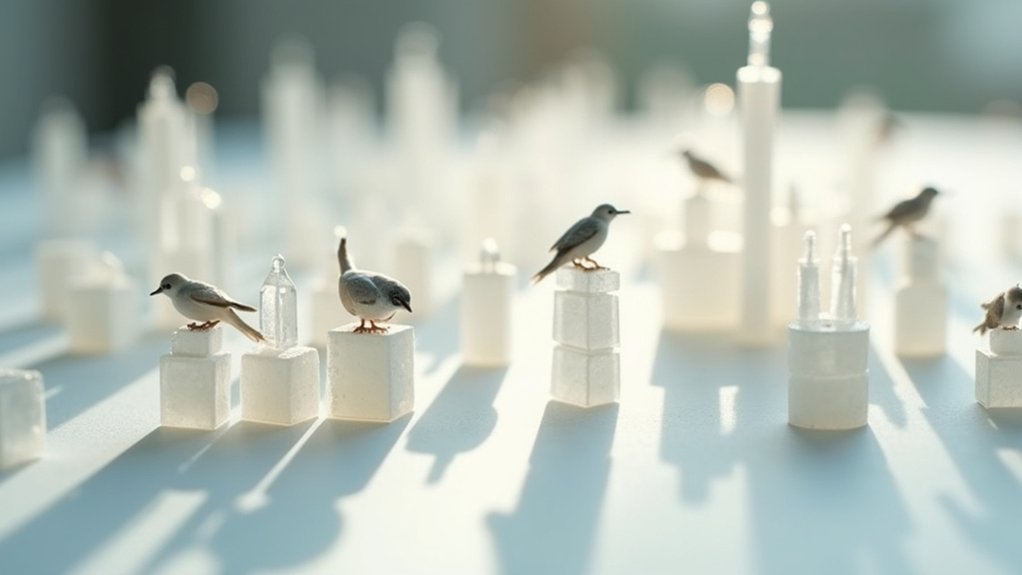
You’ll need to fine-tune your support interface distance to balance print stability with post-processing ease for tiny models.
Setting distances between 0.1-0.5mm typically works well, though you can go as tight as 0.0mm if adhesion becomes critical for intricate features.
Test small incremental changes to find the sweet spot where your supports hold delicate details securely but still remove cleanly after printing.
Optimal Distance Settings
When you’re dialing in support settings for tiny models, the interface distance becomes your most critical variable for achieving clean, damage-free removal.
The sweet spot varies depending on your model’s complexity and detail level.
For best results with tiny models, consider these distance guidelines:
- 0.0-0.1mm – Best for models requiring maximum detail preservation
- 0.1-0.2mm – Ideal balance for most intricate designs with delicate features
- 0.2-0.3mm – Suitable when you’re prioritizing easy removal over surface quality
- Above 0.3mm – Risk of weak supports that may fail during printing
- Test incrementally – Start tight and increase distance until removal becomes manageable
You’ll need to experiment with your specific printer and material combination.
Sharp edges and overhangs require tighter distances, while bulkier sections can tolerate slightly larger gaps without compromising structural integrity.
Interface Layer Adhesion
Interface layer adhesion requires precise calibration to prevent your tiny models from fusing permanently to their supports while maintaining enough contact to guarantee structural stability during printing.
You’ll achieve superior results by setting your support interface distance to 0.0 mm for maximum adhesion between supports and your model. This minimizes fusion risks while ensuring easier removal after printing.
When you adjust the top support distance, you can enhance support removal, but don’t increase it excessively as this compromises stability and print quality.
Consider using dissimilar filaments like BVOH or PETG for support interfaces, as their different material properties improve separation and boost overall print quality.
Test and adjust your support interface settings frequently during slicing to maximize success rates for intricate tiny models.
Manual Support Placement Techniques
Although automatic support generation works well for most prints, manual support placement gives you precise control that’s essential for tiny models with intricate details.
Manual support placement techniques require strategic positioning to guarantee print success:
- Connect supports at nozzle diameter contact points to create weak spots for easy removal.
- Stabilize supports every 2 cm to prevent lifting during cooling and avoid nozzle collisions.
- Use diagonal supports and bridges to strengthen support trees for models with protruding features.
- Focus on areas where traditional supports aren’t needed but small overhangs require assistance.
- Preview layers regularly in your slicer to identify gaps and verify support effectiveness.
You’ll find this approach particularly valuable for models with swords, delicate appendages, or complex geometries where automated systems might add unnecessary material or miss critical support zones.
Water-Soluble Support Filaments for Complex Geometries
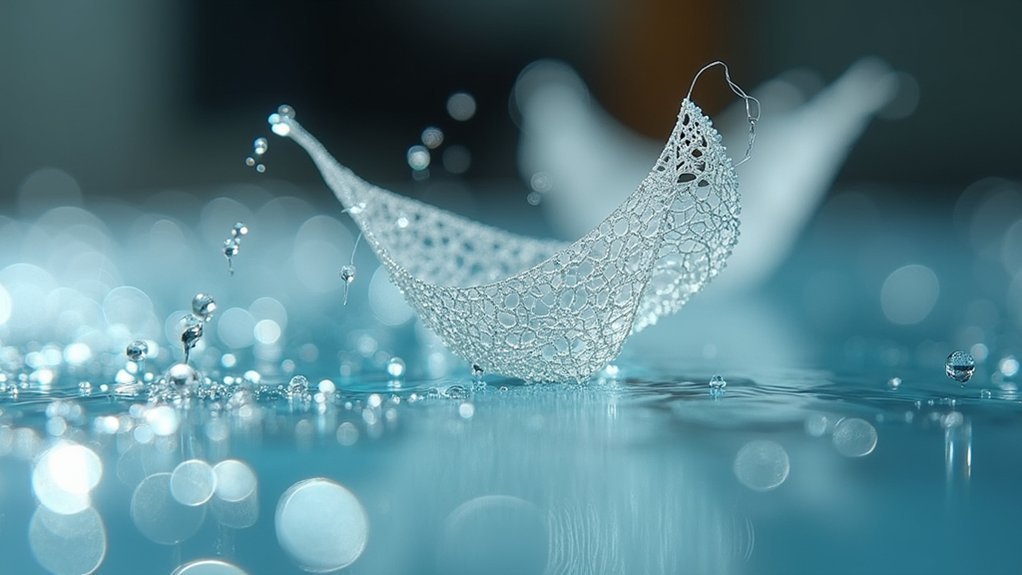
When you’re printing tiny models with intricate details, you’ll need to choose between BVOH and PVA water-soluble supports based on their distinct properties.
BVOH offers superior strength and temperature resistance but costs considerably more than PVA, while PVA provides adequate support for most applications at a fraction of the price.
You can optimize dissolution time by adjusting water temperature and agitation, with BVOH typically dissolving faster than PVA in warm water conditions.
BVOH Vs PVA Properties
Since tiny models demand precise support removal without damaging delicate features, choosing between BVOH and PVA becomes essential for your printing success.
Understanding BVOH vs PVA properties helps you select the ideal water-soluble support for intricate geometries.
Both filaments dissolve in water, but their performance characteristics differ greatly:
- Thermal stability: BVOH withstands higher printing temperatures without degrading, unlike PVA
- Dissolution speed: BVOH dissolves faster and more efficiently, reducing post-processing time
- Surface finish: BVOH leaves fewer residues, providing cleaner removal than PVA
- Adhesion quality: BVOH offers excellent adhesion to various base materials
- Material compatibility: PVA works well with PLA, while BVOH supports broader temperature ranges
For tiny models requiring precise detail preservation, BVOH’s superior dissolution properties and cleaner removal make it advantageous over PVA’s potential residue issues.
Dissolution Time Optimization
Beyond selecting the right water-soluble filament, optimizing dissolution time becomes your next priority for achieving flawless tiny model results.
You’ll greatly reduce dissolution time by using warmer water temperatures, which accelerates PVA breakdown considerably. Print your supports with thinner layer heights since thicker supports take notably longer to dissolve completely.
Set your support interface distance to 0.0mm for minimal fusion, making removal easier and faster.
You’ll also want to increase humidity levels during printing to improve adhesion between supports and your model, ensuring stability throughout the process.
These optimization strategies work together to minimize dissolution time while maintaining print quality.
Support Removal Tools and Best Practices
Successfully removing supports from tiny models requires the right tools and a careful approach that protects delicate features. Your choice of support removal tools can make the difference between a pristine finish and damaged details.
Essential tools and techniques for clean support removal:
- Precision hobby knives for tight spaces and flush cutters for larger supports guarantee clean cuts without model damage.
- Sharp, clean tools prevent uneven cuts and protect delicate features during removal.
- Methodical approach starting with accessible supports while avoiding pulling or twisting prevents breakage.
- Warm water soaking for PLA prints softens material interfaces, making removal considerably easier.
- Post-removal sanding with small files and sanding sticks smooths rough areas and enhances overall finish.
This systematic approach guarantees your tiny models retain their intricate details.
Print Orientation Strategies to Minimize Support Requirements
While support removal techniques are essential, the smartest approach is preventing excessive supports through strategic print orientation. You’ll dramatically reduce support needs by tilting your models 30-45 degrees, which minimizes overhangs while improving resin drainage.
Position larger flat surfaces parallel to your build plate to stabilize models and reduce required supports.
Smart print orientation strategies involve placing supports in hidden areas to preserve your model’s visible features. Orient miniature details like swords horizontally rather than vertically to avoid complex support placement that compromises quality.
You’re not just improving aesthetics – you’re saving material and reducing print time by decreasing support complexity. Strategic orientation transforms challenging prints into manageable ones while maintaining detail quality.
Layer Height Considerations for Support Quality
Since layer height directly determines how smooth and stable your supports will be, choosing the right setting becomes essential for tiny model success. Finer layers create better adhesion between supports and your model while providing more precise contact points that reduce printing failures.
Your layer height choices should match your project’s requirements:
- Use 20-30 microns for display pieces requiring maximum detail retention
- Set 50 microns for gaming miniatures to balance quality with printing speed
- Choose lower settings when using 0.1mm nozzles for enhanced detail stability
- Create smoother support interfaces that minimize post-processing damage risks
- Adjust layer height alongside support density to optimize material usage
Remember that reducing layer height improves support quality by generating finer details that better adhere to your model’s intricate surfaces.
Temperature Settings for Support Material Adhesion
Getting your temperature settings right determines whether your supports will stick properly to your tiny model or fail during printing. You’ll need precise temperature settings for support material adhesion to avoid catastrophic failures.
For PLA supports, set your nozzle to 200-210°C to achieve strong layer adhesion while maintaining removability. PETG supports require higher temperatures around 230-250°C for ideal bonding without excessive fusion.
| Material | Nozzle Temp (°C) | Bed Temp (°C) |
|---|---|---|
| PLA | 200-210 | 60 |
| PETG | 230-250 | 80 |
| ABS | 240-260 | 100 |
Don’t overlook bed temperature—60°C for PLA prevents warping and improves foundation adhesion. Lower your fan speeds during initial support layers to enhance bonding and prevent detachment disasters.
Post-Processing Techniques After Support Removal
After you’ve carefully removed supports from your tiny models, you’ll need to address the rough attachment points and surface imperfections left behind.
Surface smoothing methods become essential at this stage to restore the miniature’s intended appearance and prepare it for painting.
You’ll also want to gather the right detail cleanup tools to tackle those hard-to-reach areas where supports connected to intricate features.
Surface Smoothing Methods
Once you’ve removed supports from your tiny models, the real work begins with surface smoothing techniques that’ll transform rough, marked surfaces into clean, professional-looking miniatures.
Different support configurations leave varying marks, but these methods will handle any imperfections:
- Start sanding with 150-grit sandpaper and progress through finer grits up to 220 for ideal smoothness
- Post-cure resin models under UV light to enhance durability and minimize surface flaws
- Apply thin primer coats to fill small gaps and improve paint adhesion
- Use dry brushing and shading techniques during painting to mask residual support marks
- Seal finished miniatures with clear varnish for protection during gameplay
These techniques guarantee your tiny models look polished regardless of which support method you originally used.
Detail Cleanup Tools
Five essential tools will dramatically improve your post-processing results when cleaning up tiny models after support removal.
You’ll need flush cutters for larger support structures and a precision hobby knife for tight spaces where detail preservation matters most. These tools guarantee clean cuts without damaging delicate features during support removal.
Start with 150–220 grit sandpaper for rough areas, then progress to finer grits for smooth finishes.
Warm water soaking helps soften PLA support interfaces, making removal easier. For resin models, post-cure your prints to enhance durability after support cleanup.
Always finish with a thin primer coat—it improves paint adhesion and protects the surface, giving your tiny models a professional, polished appearance that highlights their intricate details perfectly.
Common Support Failures and How to Avoid Them
When your support structures fail during tiny model printing, you’ll typically encounter one of several predictable issues that can derail an otherwise perfect print.
These common failures stem from inadequate planning and improper support configuration for miniature-scale models.
Poor planning and incorrect support settings are the primary culprits behind failed miniature prints.
- Weak supports causing sagging: Overhangs exceeding 45° collapse when supports aren’t dense enough for tiny geometries.
- Sharp edge complications: Intricate details like miniature swords create support generation gaps, leading to print defects.
- Poor support coverage: Insufficient checking in slicing software leaves critical areas unsupported.
- Fusion problems: Supports bond too tightly to models when interface distances aren’t optimized.
- Wrong support type: Standard grid supports fail where manual tree supports would provide better stability.
You can avoid these issues by testing settings frequently and adjusting interface distances to 0.0mm for easier removal.
Alternative Software Solutions for Support Generation
While fixing these failures often requires tweaking settings within your current software, sometimes the solution lies in switching to specialized support generation tools altogether. Alternative software solutions like ChiTuBox and Cura can dramatically improve your tiny model printing success rates.
| Software | Best Feature | Compatibility |
|---|---|---|
| ChiTuBox | Precise micro-supports | Import to Preform |
| Cura | Advanced customization | Universal export |
| Preform | Native integration | Formlabs printers |
These programs offer extensive customization options that often surpass built-in support tools. You can fine-tune parameters specifically for intricate designs, then import your supported models back into your preferred printing software. Many users report higher success rates when generating supports externally, especially for complex builds with detailed features. Experimenting with different software helps you discover ideal configurations.
Scaling Models to Improve Support Performance
Although software solutions can dramatically improve support generation, you’ll sometimes find better results by scaling your tiny models larger before printing. Scaling models up to 400% creates a larger surface area for supports to attach, greatly reducing lifting risks during printing.
Scaling tiny 3D models up to 400% significantly improves support attachment and reduces print failures during production.
When scaling models for better support performance, consider these key factors:
- Increased stability – Larger models provide greater overall stability during the printing process.
- Easier support removal – Bigger supports are more robust and simpler to manipulate post-print.
- Adjusted support settings – Modify support density and placement to match new dimensions.
- Enhanced detail preservation – Larger scale often maintains fine details better than tiny prints.
- Strategic orientation – Combine scaling with ideal positioning to minimize support requirements.
Remember to recalibrate your support parameters when scaling models to guarantee ideal printing results.
Frequently Asked Questions
How Do I Add Supports to a Model?
You’ll use slicing software like Cura or Meshmixer to generate supports automatically or manually. Adjust density settings, place supports under overhangs exceeding 45°, then preview layers before printing.
What Are the Best Supports for FDM?
You’ll get best results with manual tree supports for FDM printing. Use 15-25% density, place them strategically in hidden areas, and consider dissimilar materials like BVOH for easier removal without damaging details.
How to Tell if a Model Needs Supports?
Check overhang angles exceeding 45° in your slicer software. Look for warnings indicating insufficient support areas. Inspect each model closely for protruding features, sharp edges, and complex geometry that’ll cause sagging without proper stabilization.
What Are the Best Supports for Cura?
You’ll want Tree Support for the best results in Cura. Set support density to 10-15%, Z distance to 0.1-0.2mm, enable Support Interface, and choose appropriate placement options for ideal printing.

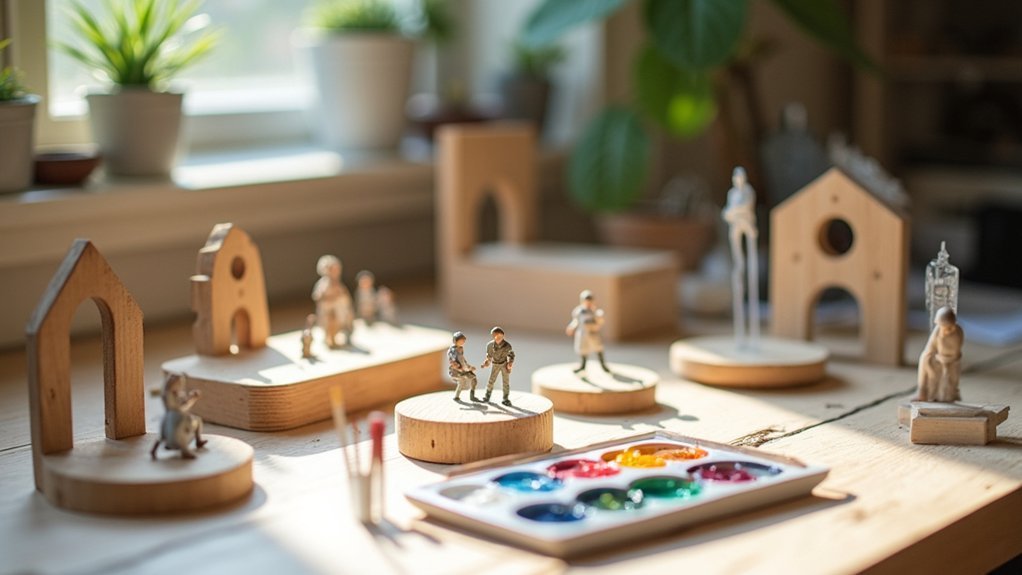
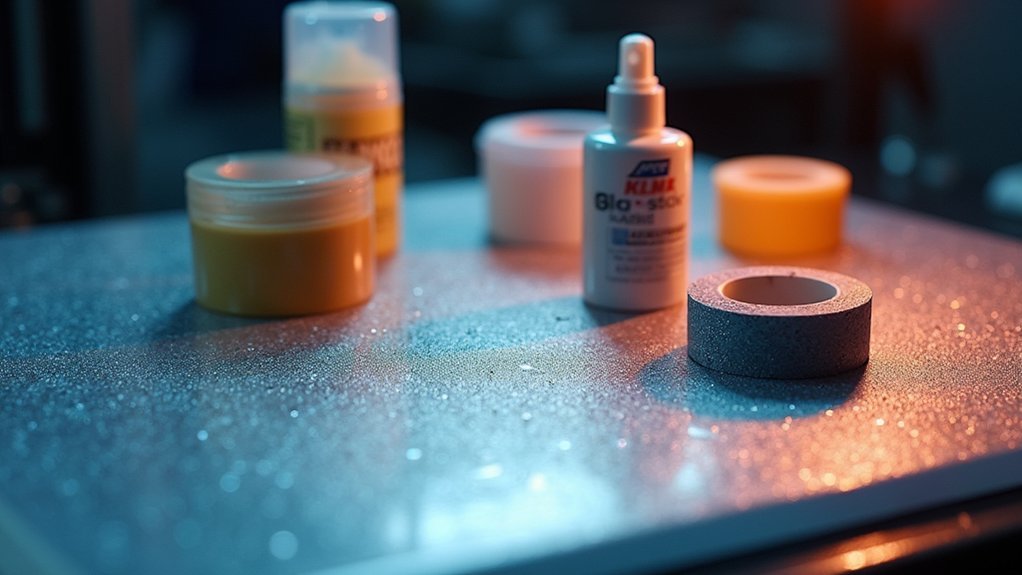
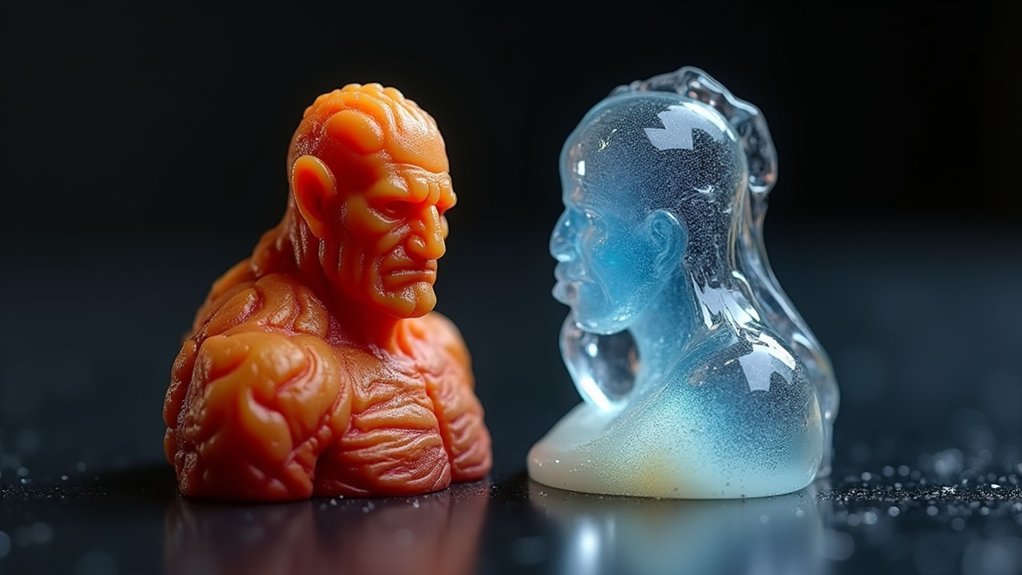
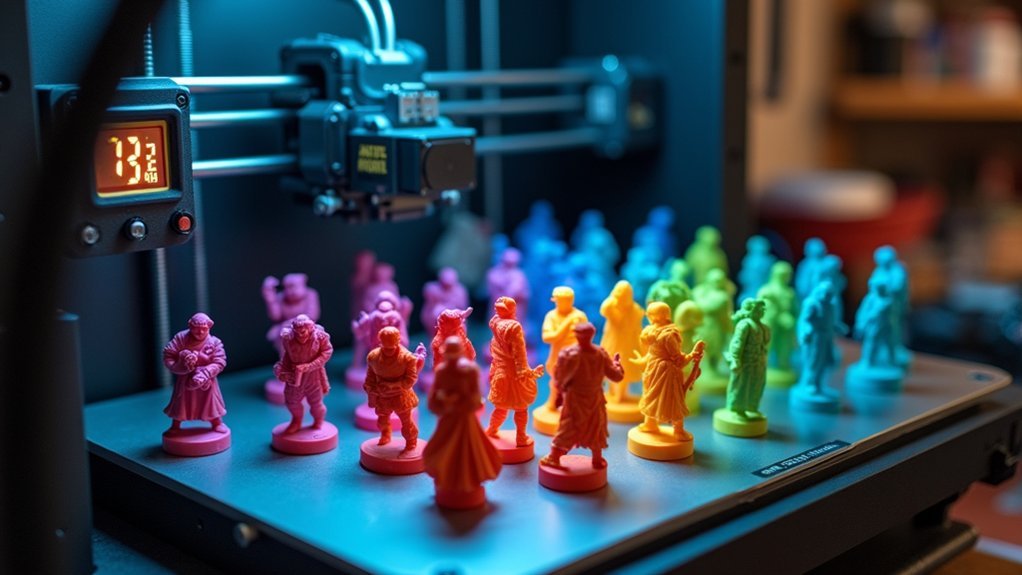
Leave a Reply